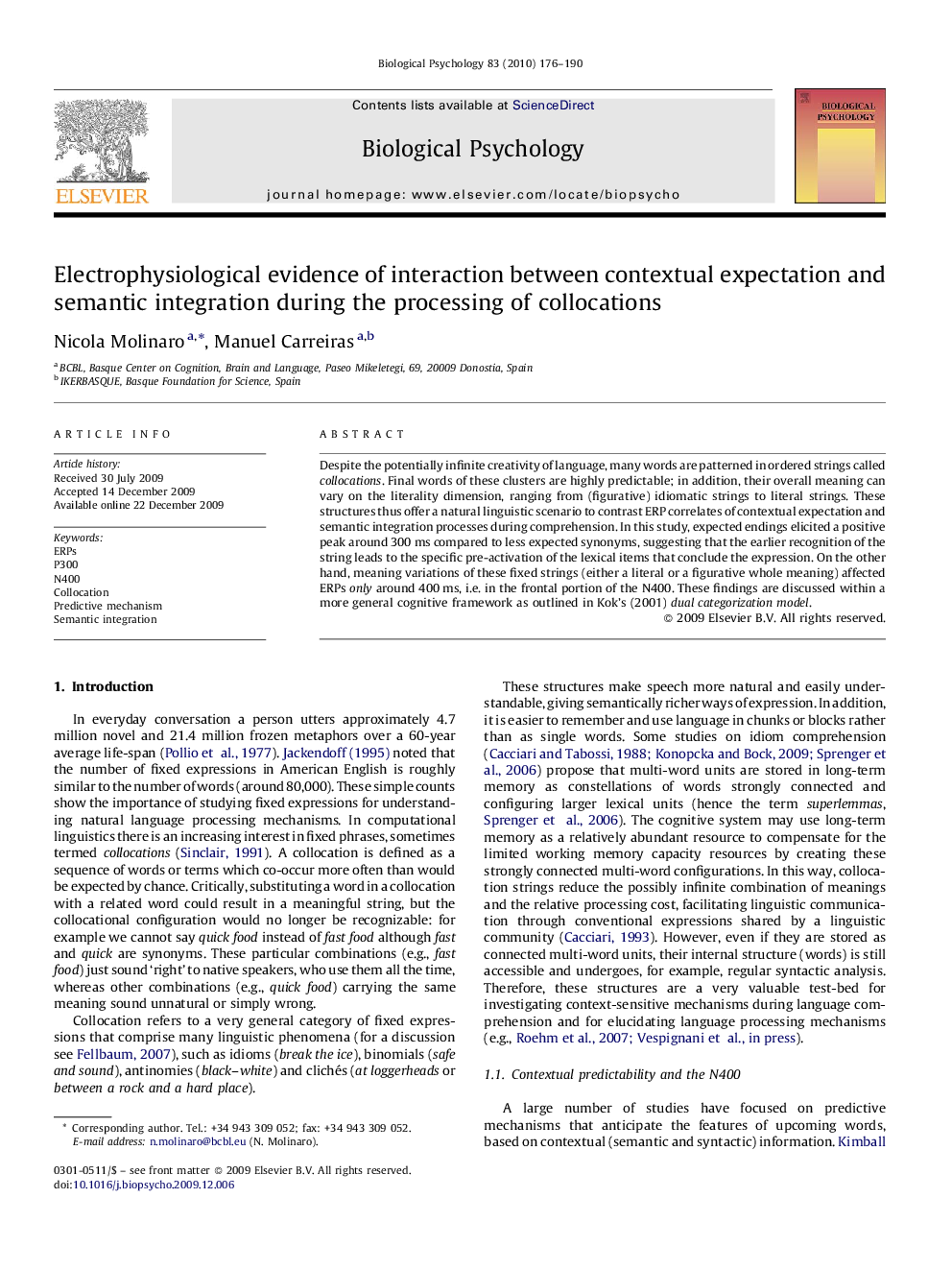| Article ID | Journal | Published Year | Pages | File Type |
|---|---|---|---|---|
| 10454404 | Biological Psychology | 2010 | 15 Pages |
Abstract
Despite the potentially infinite creativity of language, many words are patterned in ordered strings called collocations. Final words of these clusters are highly predictable; in addition, their overall meaning can vary on the literality dimension, ranging from (figurative) idiomatic strings to literal strings. These structures thus offer a natural linguistic scenario to contrast ERP correlates of contextual expectation and semantic integration processes during comprehension. In this study, expected endings elicited a positive peak around 300Â ms compared to less expected synonyms, suggesting that the earlier recognition of the string leads to the specific pre-activation of the lexical items that conclude the expression. On the other hand, meaning variations of these fixed strings (either a literal or a figurative whole meaning) affected ERPs only around 400Â ms, i.e. in the frontal portion of the N400. These findings are discussed within a more general cognitive framework as outlined in Kok's (2001) dual categorization model.
Related Topics
Life Sciences
Neuroscience
Behavioral Neuroscience
Authors
Nicola Molinaro, Manuel Carreiras,
